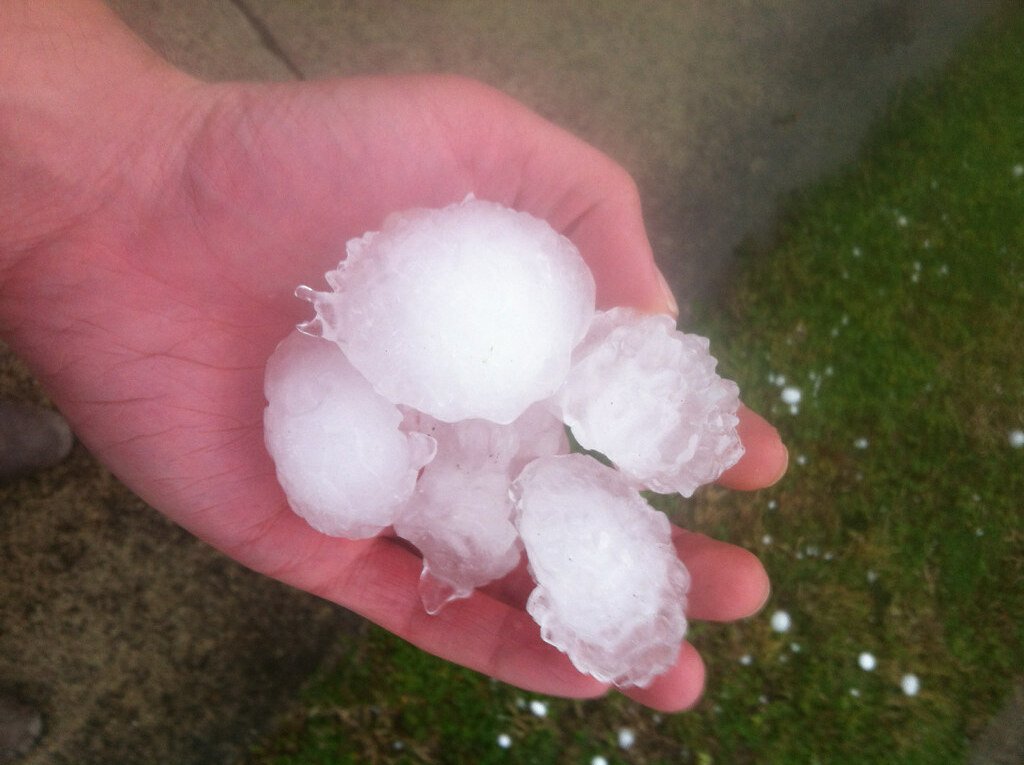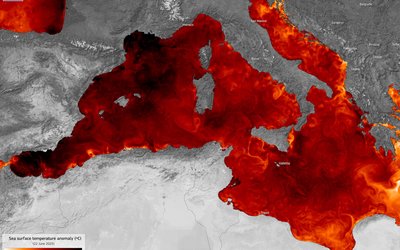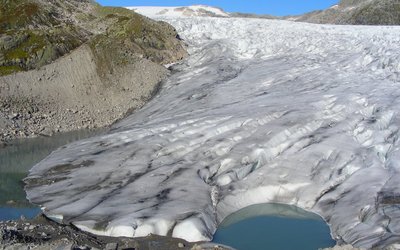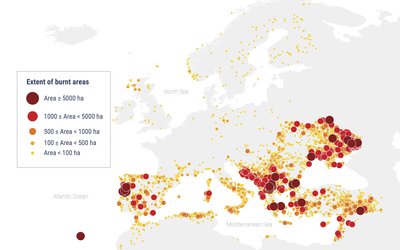
Photo: Chris Butterworth, www.flickr.com
Not all changes in extreme weather events have been attributed to climate change in scientific studies. This especially applies to hailstorms. These storms can develop when the difference in temperature between the Earth’s surface and the air is large, and when there is enough moisture in the rising air to form ice particles once the air high above cools to below zero.
In August 2022, a damaging hailstorm with hailstones up to 12 cm caused significant harm in northeastern Spain. Hailstones this large have never been documented before in Spain. The hailstorm injured 67 people. One person died. There was a lot of damage to roofs, cars and croplands.
The event coincided with a record‐breaking marine heatwave in the Mediterranean Sea. A marine heatwave is an event where areas of seawater become much warmer than the surrounding water for a significant period of time. This phenomenon was observed in the Mediterranean Sea for the first time in the summer of 2003, when for more than a month the seawater was 2°C to 3°C warmer than normal in summer. In 2003, 2006 and 2008, heatwaves in the Mediterranean Sea led to mass mortality events. These events seem to have become a regular phenomenon; extreme marine heatwaves also occurred in the Mediterranean Sea in the summers of 2018 and 2022.
Scientists studied the hailstorm event of 2022 and concluded that the intensity of this event was influenced by abundant atmospheric energy and moisture from the warm sea during the marine heatwave. This heatwave, in turn, was influenced by human‐induced climate change. Model simulations that did not include the effect of the marine heatwave led to smaller hailstones.
According to these scientists, this is the first study to attribute a giant‐hail event to human‐induced climate change.
Sources:
- Martín et al., 2024. Geophysical Research Letters, 51, e2023GL107632.
- Simon et al., 2023. Weather and Climate Extremes 42, 100619.








